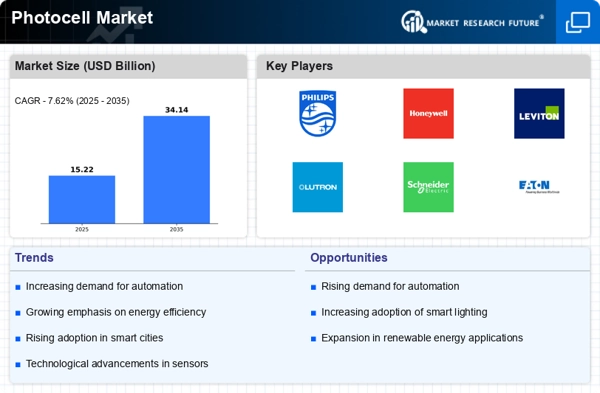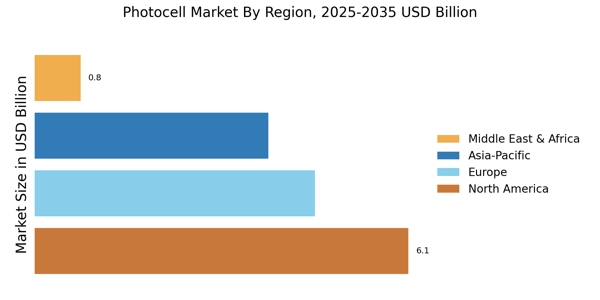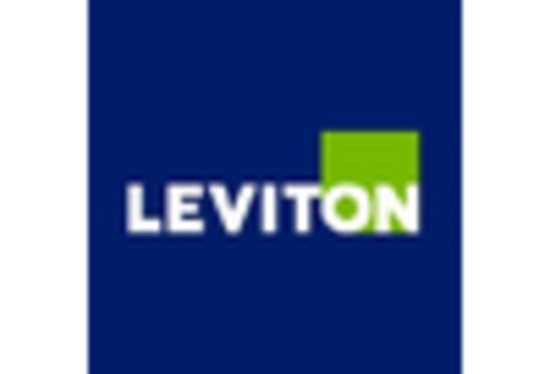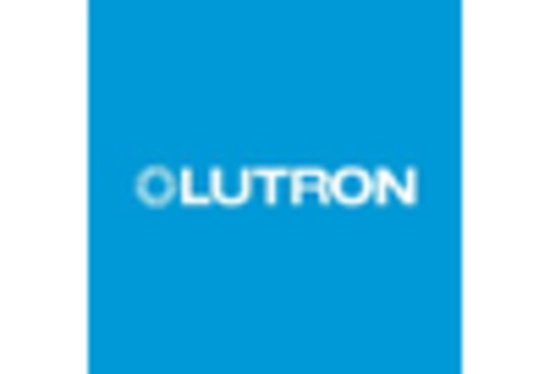Integration with Smart Technologies
The integration of photocells with smart technologies is transforming the Photocell Market. As smart home and building automation systems gain traction, the demand for intelligent lighting solutions that incorporate photocells is on the rise. These systems allow for enhanced control over lighting, improving user convenience and energy management. Market analysis suggests that the smart lighting segment, which includes photocells, is expected to reach a valuation of several billion dollars by 2026. This integration not only enhances functionality but also appeals to tech-savvy consumers who prioritize innovation and efficiency in their lighting solutions.
Rising Demand for Energy Efficiency
The increasing emphasis on energy efficiency is a primary driver in the Photocell Market. As energy costs continue to rise, consumers and businesses alike are seeking solutions that reduce energy consumption. Photocells, which automatically adjust lighting based on ambient light levels, are becoming essential in both residential and commercial applications. According to recent data, the adoption of energy-efficient lighting solutions, including photocells, is projected to grow at a compound annual growth rate of approximately 10% over the next five years. This trend indicates a robust market potential for photocell technologies, as they align with the broader goals of reducing carbon footprints and enhancing energy savings.
Increased Awareness of Environmental Impact
The heightened awareness of environmental issues is influencing the Photocell Market. Consumers and businesses are increasingly recognizing the importance of sustainable practices, leading to a surge in demand for products that minimize environmental impact. Photocells contribute to this effort by optimizing energy use and reducing greenhouse gas emissions associated with traditional lighting systems. Market Research Future indicates that the eco-friendly lighting segment, which includes photocells, is expected to witness significant growth as more stakeholders prioritize sustainability in their purchasing decisions. This shift in consumer behavior is likely to drive innovation and investment in photocell technologies.
Supportive Government Policies and Incentives
Supportive government policies and incentives are playing a crucial role in the Photocell Market. Many governments are implementing regulations and financial incentives to promote energy-efficient technologies, including photocells. These initiatives often include tax credits, rebates, and grants aimed at encouraging the adoption of energy-saving solutions. Recent reports suggest that countries with robust energy efficiency programs are experiencing faster growth in the adoption of photocell technologies. This supportive regulatory environment not only fosters market growth but also encourages manufacturers to innovate and improve their product offerings, further enhancing the competitiveness of the photocell market.
Growing Urbanization and Infrastructure Development
Urbanization and infrastructure development are significant factors driving the Photocell Market. As urban areas expand, the need for efficient street lighting and public infrastructure becomes increasingly critical. Photocells play a vital role in street lighting systems, ensuring that lights operate only when necessary, thus conserving energy and reducing operational costs. Recent statistics indicate that urban areas are projected to grow by over 2 billion people by 2050, necessitating the implementation of smart and efficient lighting solutions. This growth presents a substantial opportunity for the photocell market, as municipalities seek to modernize their lighting systems.


















Leave a Comment